

Putin’s Disneyland: why Russia built the “New Chersonese” in Sevastopol
This year marks the 11th anniversary of the annexation of Crimea and Sevastopol. During this time, the occupiers have created various so-called ‘historical memory preservation projects’ on the peninsula. In July 2024, the Russians announced the opening of the New Chersonesos Historical and Archaeological Park on the territory of the Tauric Chersonesos Reserve in occupied Sevastopol.
This is one of the largest ‘projects’ that the Russians have built during the occupation, where visitors are shown a distorted, Russian version of the peninsula’s ‘history’.
Realna Gazeta looked into what exactly was built in the reserve and for what purpose, and what role this project plays in Putin’s imperial policy.
Tauric Chersonesos is an ancient Greek city founded more than 2,500 years ago on the Black Sea coast. It was once an important trade and cultural centre where different peoples and traditions intersected. It was here, according to legend, that Prince Volodymyr the Great was baptised before the introduction of Christianity in Kyivan Rus.
In 2013, Tauric Chersonesos, located in Sevastopol, was included in the UNESCO World Heritage List, but after the occupation of Crimea, Russia began to carry out illegal work on its territory.
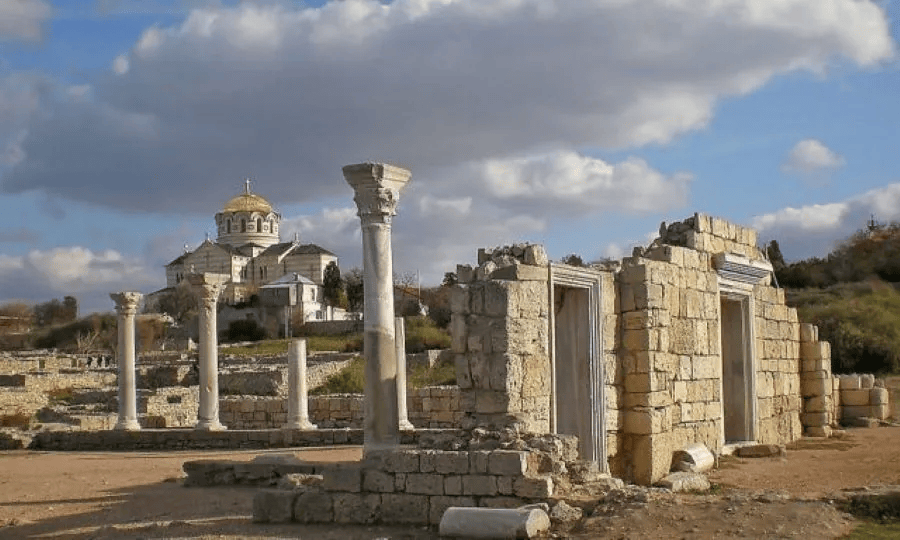
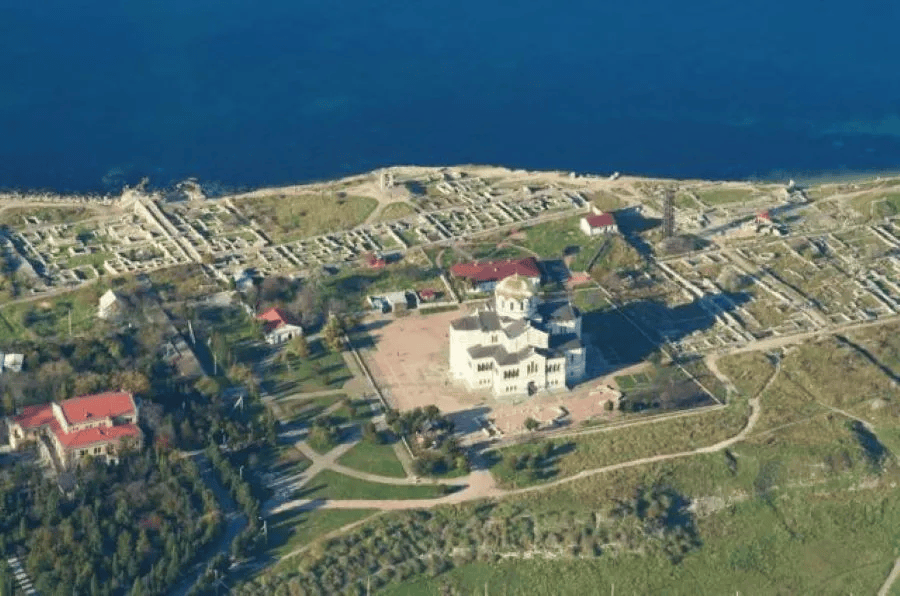
“Putin’s personal project”
For the first time, Putin spoke about building a theme park on the reserve’s territory in 2015 during a trip to Sevastopol with former Italian Prime Minister Silvio Berlusconi. And in August 2017, he instructed the Russian government and the Ministry of Defence to provide land plots for the “creation of a historical and archaeological park”.
Work on the “New Chersonesos” began almost immediately after the annexation of Crimea. According to Evelina Kravchenko, a senior researcher at the Institute of Archaeology of the National Academy of Sciences of Ukraine, in 2015-2016, the developers fenced off archaeological remains such as towers, walls, and columns and installed observation decks. An ancient open-air theatre was built on the site of the ancient citadel, which put a strain on the authentic structures.
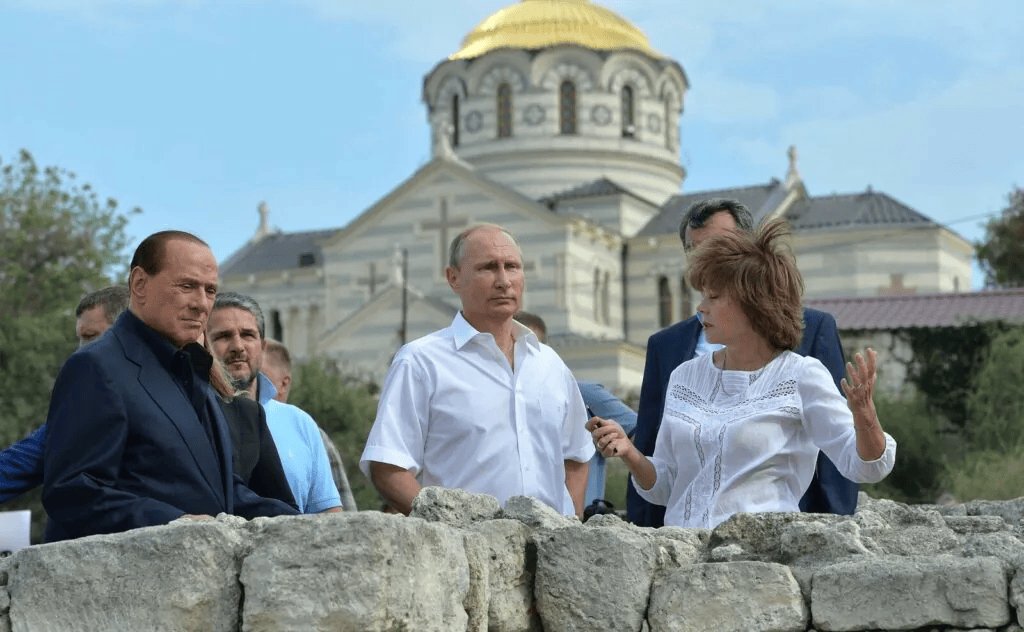
In July 2024, the Russian authorities opened the “New Chersonesos” complex in occupied Sevastopol. Putin’s project was implemented by the My History Foundation of the Patriarchal Council for Culture of the Russian Orthodox Church, and the Russian Ministry of Defence was the general contractor. Russian state corporations Gazpromneft, Transneft, Sberbank, and others also took part in the construction.
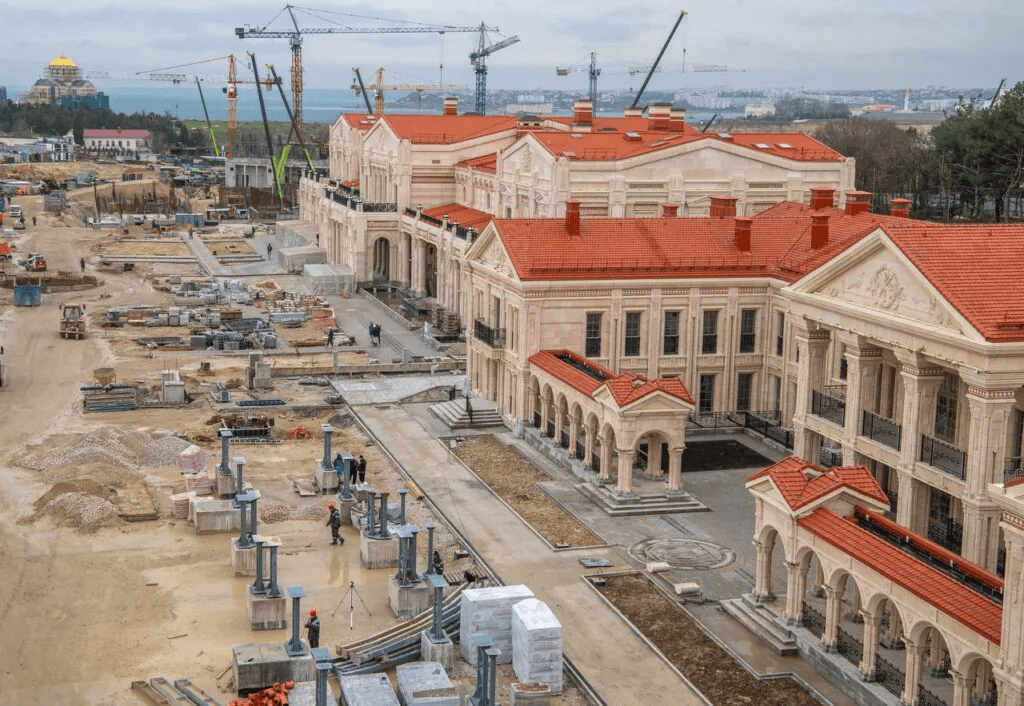
That is, it is not just another development on the Black Sea coast, but a large-scale project of the Russian authorities in the territory where unique archaeological remains are preserved, and the site itself is a UNESCO World Heritage Site.
“New Chersonesos is an expensive showcase of Russians”
According to the Ministry of Culture and Strategic Communications of Ukraine, Russians destroyed a part of the ancient city covering an area of more than 80,000 square metres. According to a report by the Institute of Archaeology of the National Academy of Sciences of Ukraine published on 21 July, at least 4,000 square metres of the reserve were directly damaged due to its misuse. The rest of the territory suffered from so-called landscaping works, which actually became a cover for interference with the historic landscape.
Doctor of Historical Sciences, Professor of Luhansk Taras Shevchenko National University Oleksandr Naboka argues that with the construction of the so-called ‘New Chersonesos” Russia is trying to create the illusion of prosperity, demonstrating the ‘superiority’ of its neo-empire, while in reality, historical heritage sites are under threat.
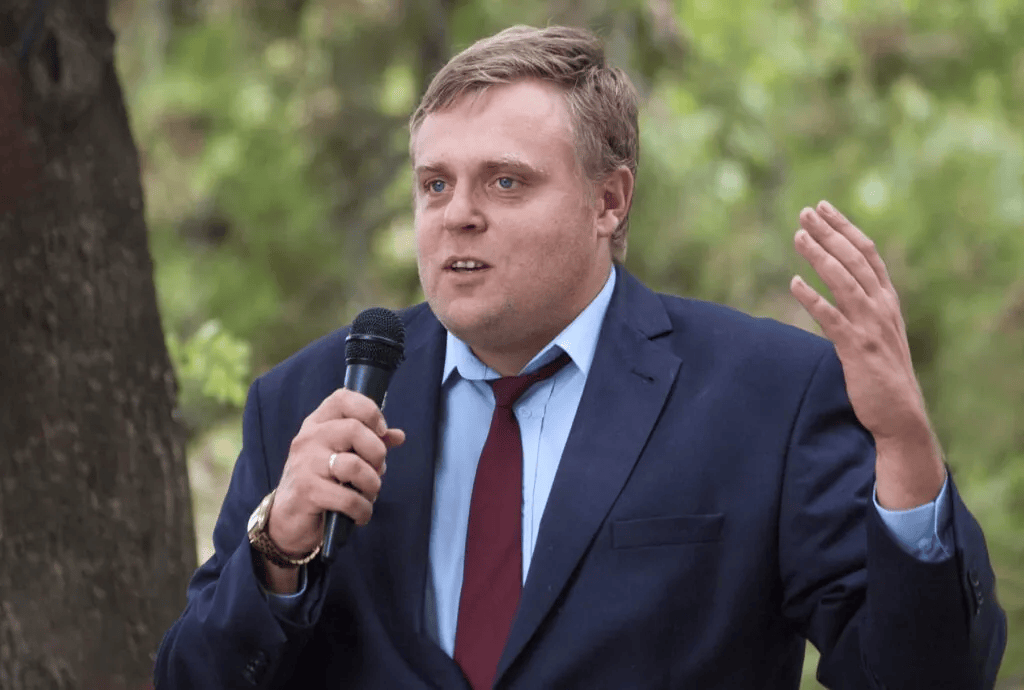
“In fact, new structures are being built there using modern building materials, such as concrete and brick, which distort the ‘historical appearance’ of archaeological sites. In particular, the construction of a modern theatre, parts of which are being integrated into the remains of an ancient building, is a cause for concern. Moreover, new walls and stands are being built directly on the ancient ramparts and walls of historic Chersonesos, which causes serious damage to the archaeological heritage. This is not restoration, but actual destruction of the scientific and historical heritage”.
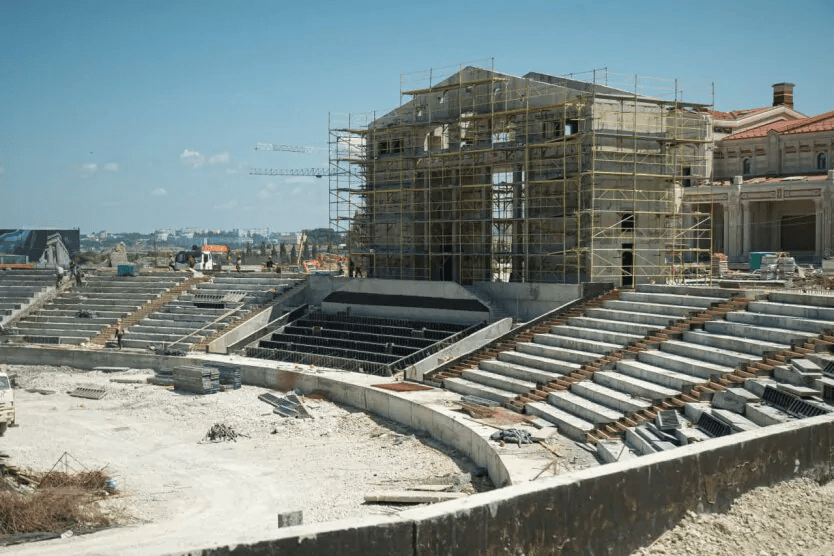

According to the park scheme shown by the Russians, the new building includes such facilities as a museum of Christianity, a museum of Crimea and Novorossiya, and a temple-park (according to the occupiers’ plan, it is an “open-air church”). Naboka adds that despite the concept of “russifying” Chersonesos, Vladimir Putin does not abandon the idea of being the ‘heir’ to the Byzantine Empire.
“It is important for Russia to feel part of this Greek project, that is, the heir to the Hellenistic ancient civilization, which through Byzantium influenced Chersonese. It is through Chersonese that the Byzantine presence in this region can be traced,” Naboka said.

In the photos posted on social media, visitors to this park note the number of Orthodox icons, crosses, and symbols associated with the Russian Empire.


They also saw propaganda bas-reliefs depicting the so-called “historical belonging of Crimea to Russia” with occupiers, a Crimean bridge and a bunch of Russian and imperial heraldry. Some visitors also said that the current occupation of Donbas plays a special role in this “exposition”.
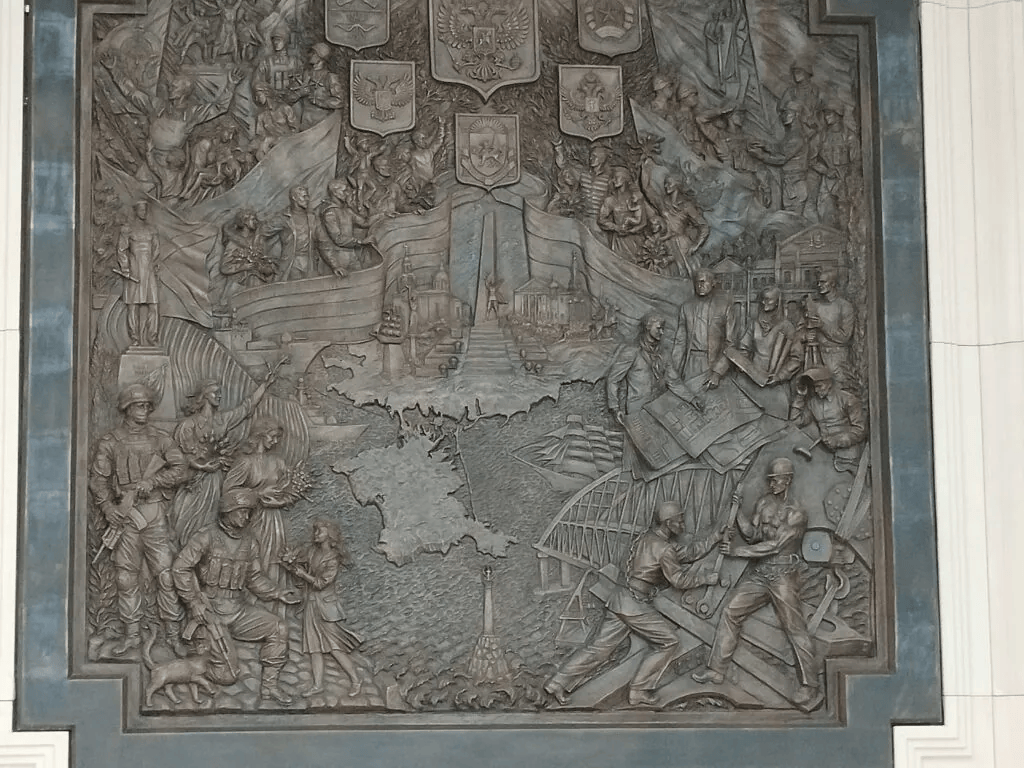
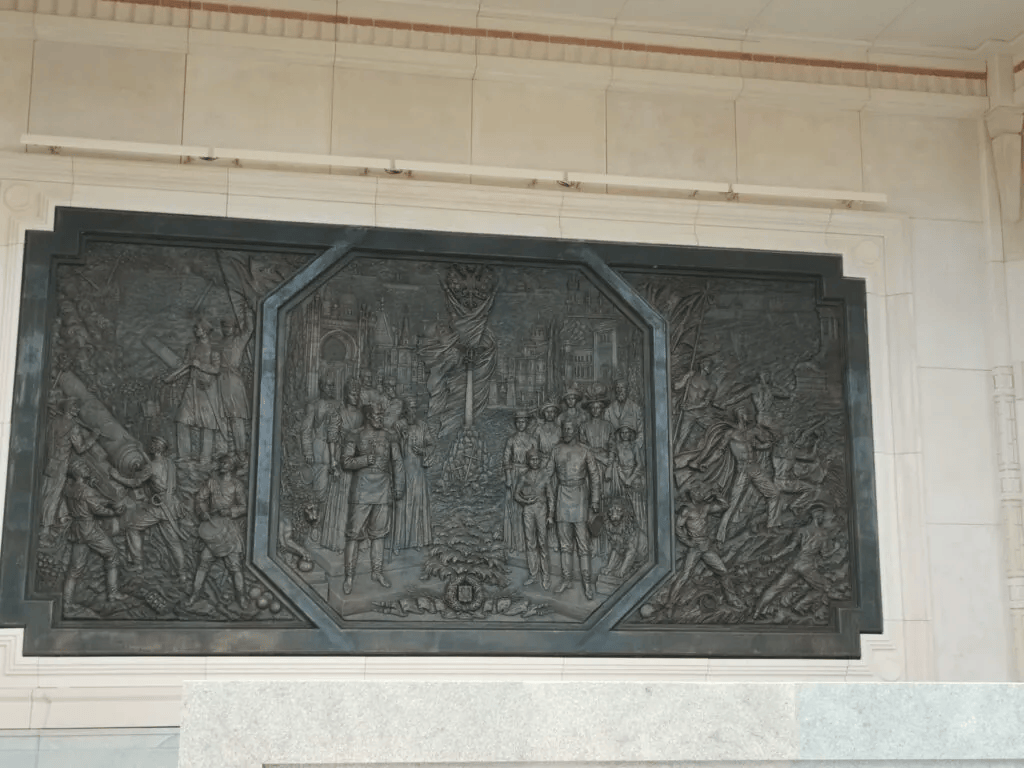
“A special place in the “New Chersonesos” is occupied by an exposition dedicated to the history of Novorossiya and the heroic deeds of the people of Donbass. Here, through authentic artefacts, photographs and documents, visitors can learn the truth about the tragic events of recent years, about the courage and resilience of Donbass residents who stood up to defend their history, culture and native language,” said one of the visitors.
We did not manage to find out in detail what exactly is presented in the “Museum of Crimea and Novorossiya”. The Russians have only published information in the public domain that the museum has 20 thematic halls: from ancient times to the present (of course, in the Russian concept).
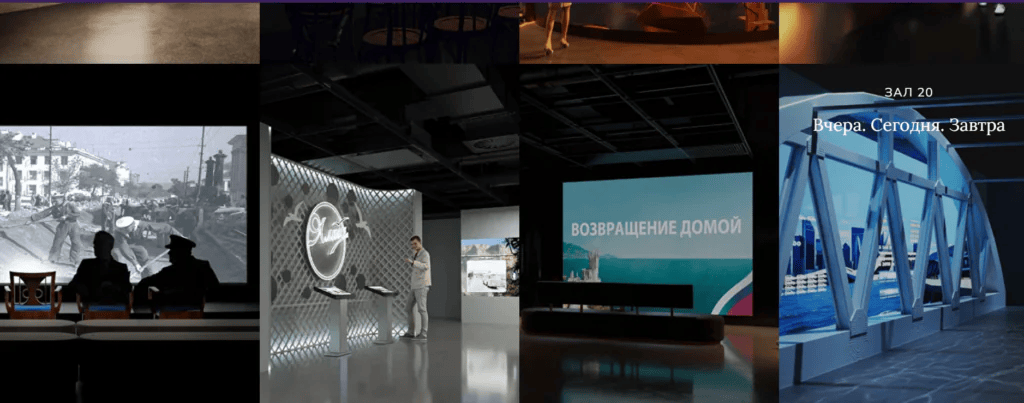
Oleksandr Naboka noted that the “New Chersonesos” is a new showcase of Russians, in particular Orthodoxy, and distorted history. He added that in the political dimension, such projects are the implementation of a ‘showcase policy’:
“Putin’s neo-imperial regime attaches “sacred significance” to Chersonesos, because, according to legend, it was here that Prince Vladimir was baptized. For some reason, Vladimir Putin perceives himself through this prism, as if he were the reincarnation of Vladimir the Great and his contribution to the “Russian Orthodox civilization” is outstanding. Then, the Soviet, pre-Soviet and post-Soviet tradition of creating such “showcases” comes into play. That is, in the territories that Russia occupies, the invaders try to do it “in a hasty manner”, demonstrating the alleged superiority of the Russian occupation over other political systems, including Ukraine.”
“Chersonesos: the pearl of Putin’s “Third Rome”
In its propaganda, Russia constantly repeats the narrative of “high spirituality and belonging to the Orthodox Church”. In the New Chersonese, they also focus on this. In their feedback and reviews, visitors to the museum of Christianity do not mention other branches of this religion, such as Catholicism or Protestantism, but speak exclusively of Russian Orthodoxy.
“On the shores of the azure bay, enveloped by the sea breeze and the glory of centuries, New Chersonesos is born — a grand historical and archaeological park designed to become a cultural and spiritual centre not only for Crimea but for the whole of Russia. Here, in the land where Russian Orthodoxy was born, where the fates of peoples and cultures intertwined, a unique space is being created that organically combines carefully preserved ancient monuments and modern technology,” writes a user named Dmitry Zolotukhin on Yandex.
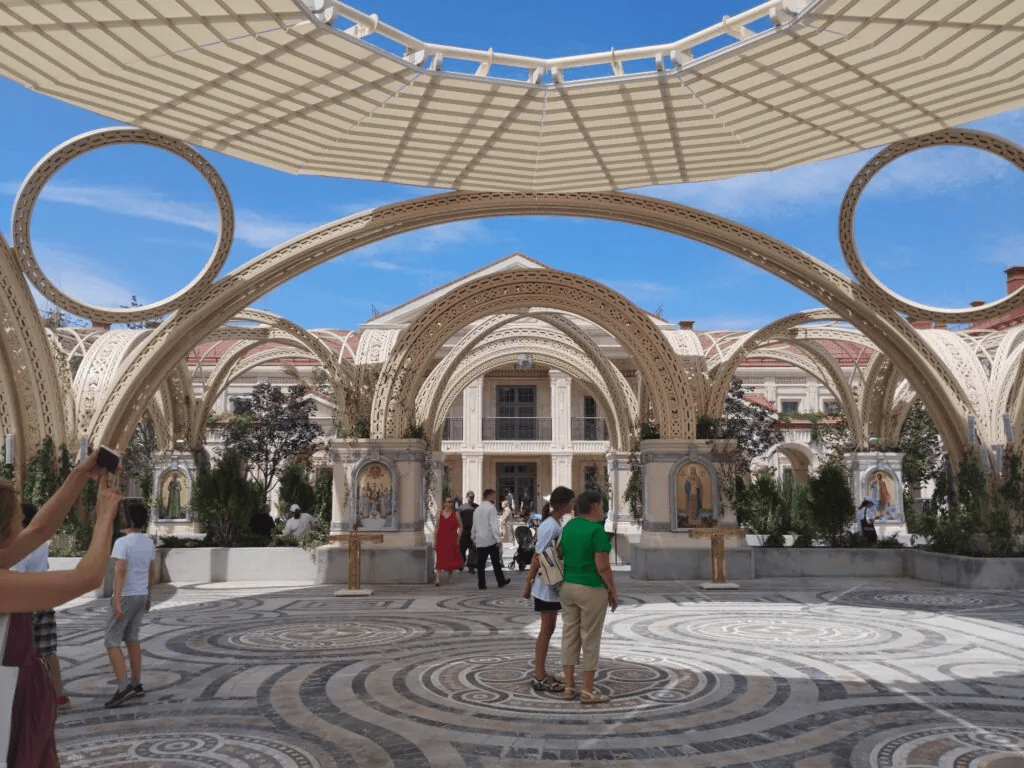
Alexander Naboka notes that the “ideological inspirer” of Putin’s ‘Moscow — the Third Rome’ concept was Metropolitan Tikhon (Shevkunov) of Simferopol and Crimea of the Russian Orthodox Church:
“Byzantium was the Second Rome – the place where, according to religious beliefs, ‘true’ Orthodoxy moved to after the first Rome fell into heresy. After the collapse of Constantinople in 1453, the concept of ‘holiness’ allegedly passed to Moscow. Moscow began to position itself as a kind of ‘Third Rome’, and it is important for Russian ideology to maintain this historical link between Byzantium, the ancient tradition, Christianity and Moscow as the ‘centre of true Orthodoxy’. In contrast to Byzantium, which, according to this myth, fell under the blows of the Turks for its sins.”
According to the historian, Metropolitan Tikhon (Shevkunov) was among those who shaped Putin’s worldview and the direction of his thoughts. He currently holds a position in the church hierarchy of Crimea.
Shevkunov was also considered one of Putin’s closest advisers on matters of faith. It was he who probably contributed to Putin’s perception of himself as Vladimir the Great, as well as to the idea of Chersonesos as a key element of the “Moscow — the Third Rome” concept.
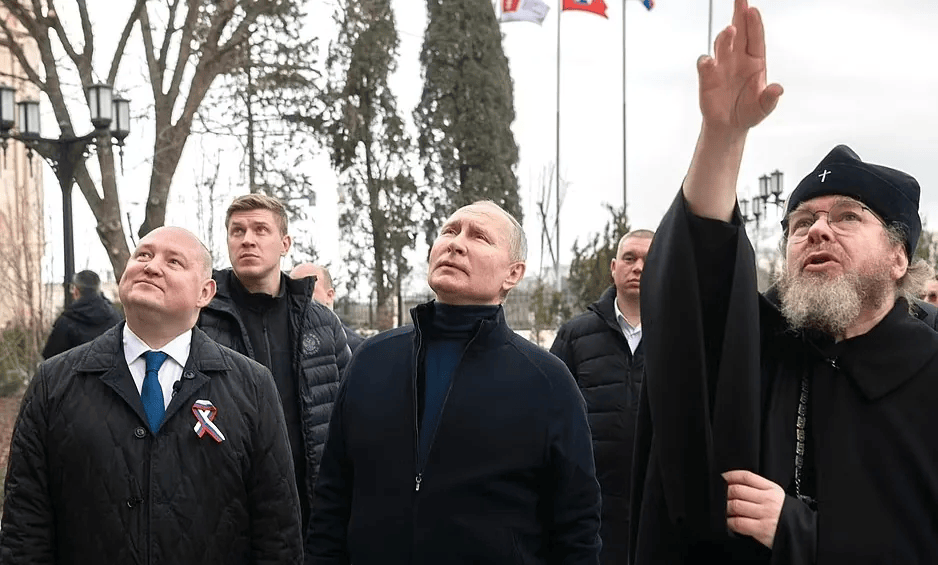
What can be done after the liberation of the peninsula?
So far, the Ukrainian authorities and UNESCO have not voiced any concrete ideas on what to do with the “New Chersonesos” after the liberation of the peninsula.
In the report of the National Academy of Sciences of Ukraine, experts note that the protection of Tauric Chersonesos requires not only international attention but also real changes in UNESCO’s monitoring procedures and control over the state of cultural heritage. They also emphasize the need to compile a list of individuals and organizations involved in the destruction of the monument, with further sanctions.
“It is also important to grant the status of a monument in danger to the world heritage site of the Ancient City of Tauric Chersonesos and its choir,” the document says.
Naboka believes that expeditions should first be conducted to assess the damage that the Russians caused to archaeological sites during construction:
“It is necessary to assess the scale of losses for both archaeology and world culture. After the liberation of Crimea, it will probably be necessary to dismantle a significant part of the so-called “pseudo-monuments”. This can be seen as part of the process of decommunization of Crimea, which is obviously a necessary step.”

The “New Chersonesos” project is not just another of Putin’s new buildings, but a large-scale tool of Russian propaganda, distorting the history of Crimea in favour of imperial narratives. Under the guise of “restoring cultural heritage”, the occupiers are trying to erase the true historical diversity and multiculturalism of the region and impose the concept of ‘primordially Russian’ land.
By using an archaeological site of world significance, Moscow is not only destroying authentic heritage, but also introducing new ideological myths that justify the occupation.